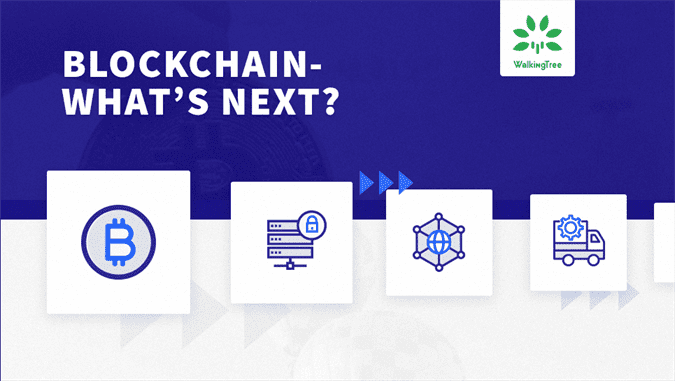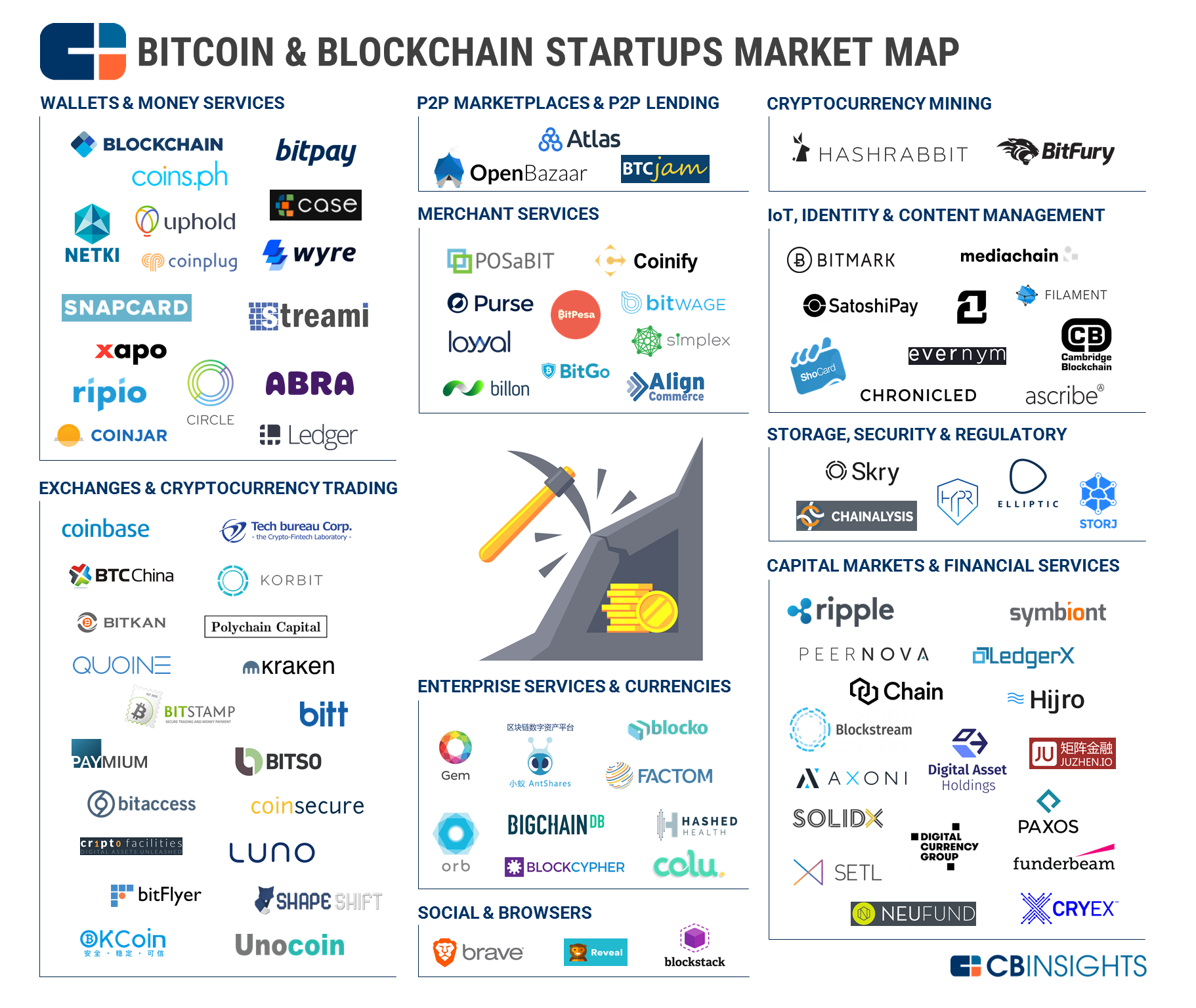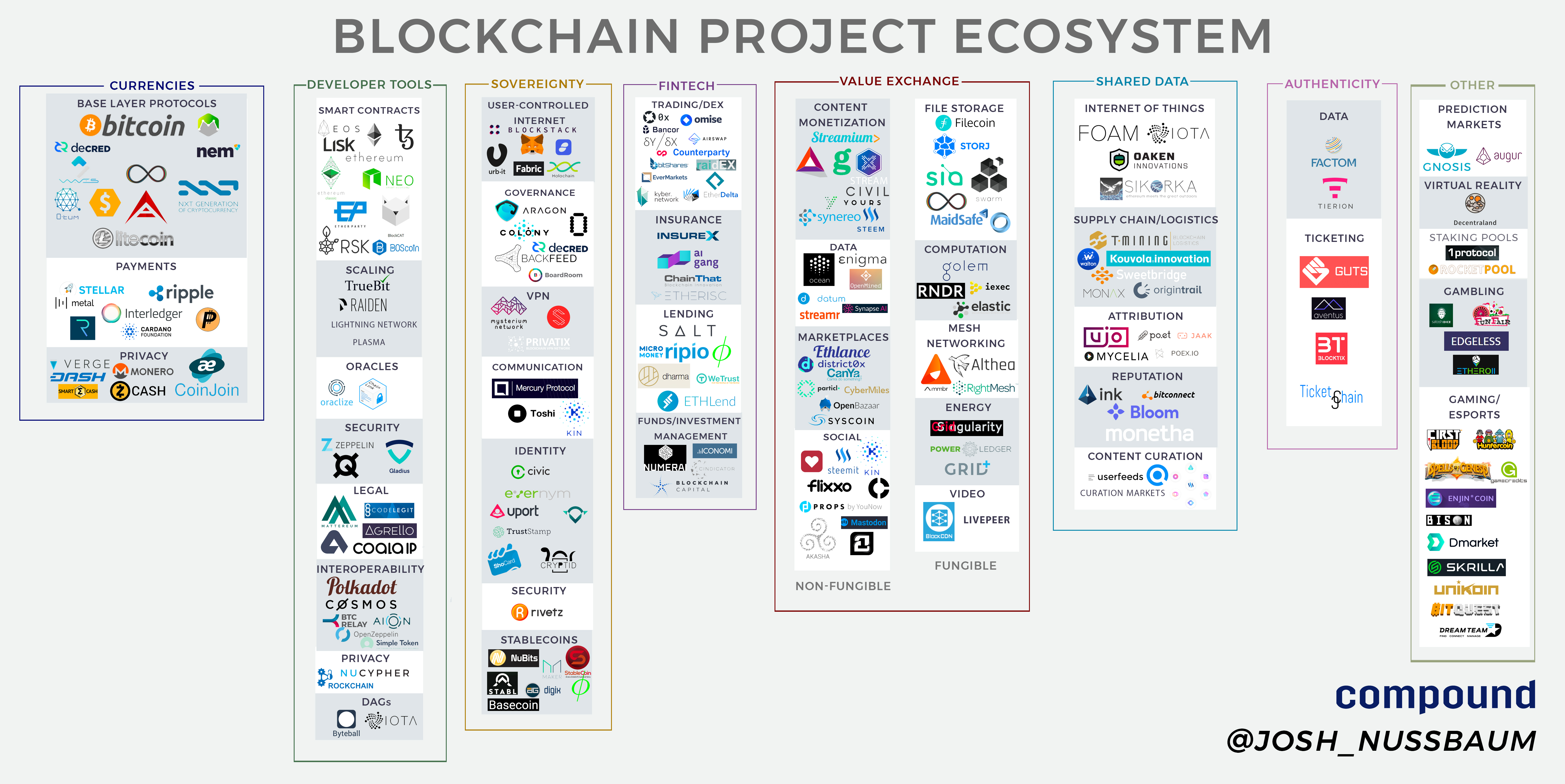In my previous article, I talked about Blockchain beyond hype! The fact is that I have never seen a technology being discussed and debated on this scale. Specifically, I live in Hyderabad, a city with which two pro-technology political leaders, KT Rama Rao and Chandrababu Naidu are emotionally associated. Both these leaders seem to be serious about utilizing blockchain to solve some of the nagging issues in their respective states. Of course, when I see so much on the ground, I know that things have moved beyond the hype!
Where are we today?
Today we are at a stage, where few people are still mixing up bitcoin/cryptocurrency with blockchain and they are interchangeably using these terms. However, there are people who know that bitcoin is just the tip of the iceberg. The sales of blockchain as a technology and crypto tokens and cryptocurrencies as an alternative form of currencies is definitely creating a lot of hope.
Let’s take a look at the below two market maps to get an idea about the areas in which people are already betting big on the blockchain:
Credit: CBInsights
Also, take a look at the below project ecosystem:
Credit: TechCrunch
A quick look at the above images indicates that the technology is already helping in the area of:
- Wallet, Money Services, Payment Transfer (a potential replacement for Swift-based transfer), Exchanges and Cryptocurrency Trading
- Storage, Security, and Regulatory
- Capital Market, Financial Services, Insurance, Lending, Investment and Trading Services
- IoT, Identify and Content Management
- Supply Chain Management
- Merchant Services
- Social Media and Browsers
- Developer Tools for managing Smart Contract, Scalability, Security, Legal, Interoperability, etc.
- Gaming and Gambling
- etc
What is next in the near (1-3 years) future?
While the current state of the Blockchain project itself looks very promising, it is also true that the technology is not yet very mature. Most of the applications that we have seen so far are Application-Specific and very focused on a specific industry/problem. However, in the near future, I do see the significant focus shifting on the following:
Enterprise Ready Blockchains
In its current form, the Blockchain is still perceived as a technology which is more transparent than an enterprise would like and less scalable than their current solutions/applications. In order to ensure that the Blockchain is enterprise-ready, there needs to be significant work done in terms of standards, testing, integrations, documentation, privacy, security and scalability.
The following diagram shows that by 2024, the enterprise business will reach around 16B USD, with a CAGR of 28%:
Credit: ameriresearch
In order to achieve this level of growth, the next 2-3 years will be very important in the enterprise space and it will give birth to a lot of exciting solutions.
Private Blockchains and Hybrid Blockchains
There will be a definite rise in the private distributed ledger and its combination with the public blockchain. People will definitely derive parallel with the cloud technology and come up with the solution which will suit the specific business need. The projects like Hyperledger and Corda are already a great step in this direction.
Increased Research Interest and Adoption
Just because the blockchain promises to increase efficiencies, reduce cost and increase transparency the academia as well as the businesses, are keen to invest in R&D and be part of the early part of this journey. Cryptography, consensus mechanism, performance, scalability, privacy, and other limitations of blockchain are under the research focus.
In the last 1-year, there has been a lot of PoCs being moved into Pilots. The next few years does seem to be exciting to see some of these Pilots becoming successful and becoming the mainstream.
According to the seasoned sales and marketing expert, Gabriel Dusil, the following diagram shows how the adoption curve for the blockchain looks like:
@Credit: Adel
As correctly depicted, the Altcoin and ICOs are news of the town today and we definitely know that blockchain is still away from being mainstream. The significant ground needs to be covered in next 2-3 years.
Consortium, Standardization, and Alliances
Blockchain as a technology is still in the exploratory mode, where tools, processes, standardizations are being defined and developed. While the tools and processes are required for the swift onboarding of the developers, the standardization will make it easier for the business to integrate with various existing and new systems.
Consortia like R3 and Hyperledger are great initiatives in this direction. Along with standardization, they can also influence and address regulatory, security, privacy, and interoperability issues.
In order to make the technology available for the mass usage, the effort is in place to improve interoperability. For example, Qtum, which makes use of Bitcoin’s UTXO mechanism, is a blockchain which is compatible with Ethereum as well as Bitcoin. There will be more such efforts in near future.
Technology Convergence
There are significant technological changes taking place at this moment. While Blockchain is one of the significant one, the progress in the area of IoT, Artificial Intelligence, AR/VR/MR will complement the effort in this direction.
In order to see IoT becoming extremely useful, the data transactions taking place between multiple networks owned and administered by multiple organizations must ensure desired integrity, decentralization and scalability. The blockchain concepts seem to be fitting in very well to ensure that the personal data is not exposed to hacking and weak links in the network get timely identified and fixed. Using the Directed Acyclic Graph-based Tangle protocol, which uses a lightweight distributed ledger, IOTA is already working towards providing scalability, quantum resistance and decentralization for a number of use-cases in the IoT and the machine economy.
Similarly, solutions like Botchain is targeting to ensure certainty and security in Autonomous Agents for the businesses, which is a great example of how blockchain will be used in the AI.
Blockchain as a Service (BaaS)
Being a digital transformation company, it just feels awesome to see the potential in Blockchain as a service. Microsoft Azure is already providing BaaS and in fact, they support most of the commonly available options like Ethereum, Hyperledger Fabric, and Corda. Similarly, IBM has come up with their own BaaS on top of Bluemix platform to enable businesses to get started with Blockchain with required ease.
And services like Electronic Government as a Service (EGaaS), which is a blockchain platform for organizing economic, public and social activities, will enable us to cut through the bureaucratic procedures and hence the corruptions and frustrations.
Summary
By now there is no doubt that Blockchain is disruptive and it will change the way we conduct our day-to-day business. It is already challenging the status quo of many existing businesses and people will definitely come up with applications which will improve efficiency and transparency. All these things do promise to make this world a better place to live.
In general, there is a consensus that we are still seeing just the tip of the iceberg. However, whatever is visible that itself look very fascinating. At Walking Tree, we are looking forward to creating an ecosystem for enabling developers to build great solutions on top of Blockchain. Do connect with us to know more about our initiatives.
References
- https://www.cbinsights.com/research/bitcoin-blockchain-startup-market-map/
- https://techcrunch.com/2017/10/16/mapping-the-blockchain-project-ecosystem/
- https://dusil.com/2017/07/27/adel-opinion-from-blockchain-innovation-to-ownership/





The following link also covers few cool stuffs regarding next steps in the Blockchain revolution: https://www.prnewswire.com/news-releases/the-next-step-in-the-blockchain-revolution-684953011.html